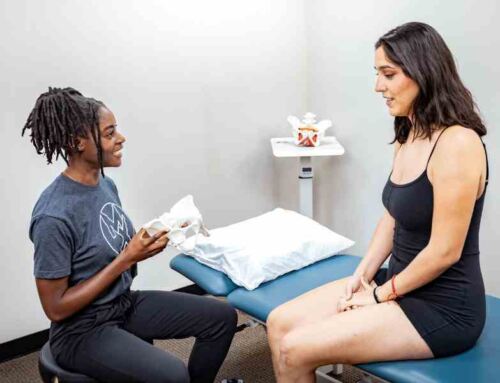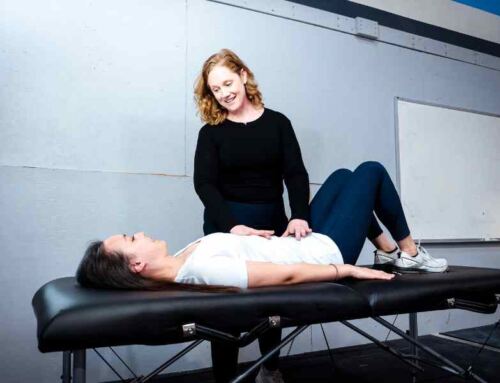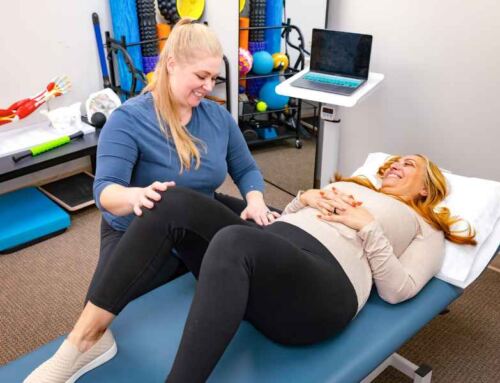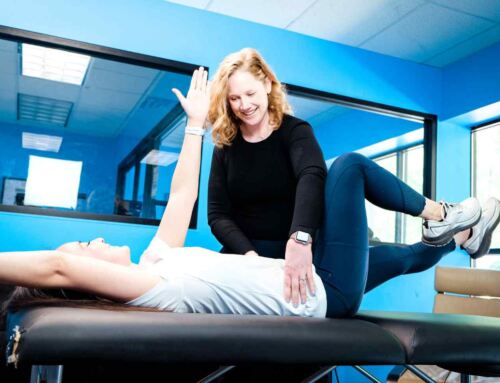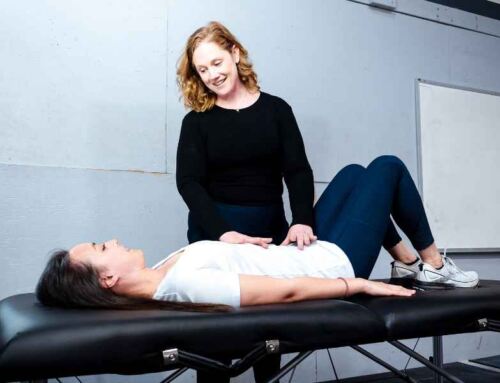Endometriosis is a common, often misunderstood condition causing severe, life-impacting pain during periods, sexual intercourse, bowel movements, urination, chronic pelvic pain, abdominal bloating, nausea, fatigue, depression, anxiety, and infertility. And, according to the World Health Organization, it affects about 10% of reproductive age women worldwide (1). While surgery and hormonal treatments are the gold standard, they don’t always address every aspect of the pain.
This article shares how physical therapy can help manage and reduce the various symptoms associated with endometriosis, giving you the tools you need to feel empowered in managing your health!
Understanding Endometriosis
Let’s start with a definition. Endometriosis is a chronic disease where tissue similar to the uterine lining grows outside the uterus.
Like many, you might ask “Why does it hurt so much?”
The short answer: the tissue growth causes inflammation and scarring.
The longer, nerdier, nuanced answer pulls from a few explanations.
First, chronic pain can lead to “guarding” or tensing of the pelvic floor muscles. Sometimes we can feel pain in an area where there is no tissue dysfunction; this is called referred pain. It is why you can feel pain in the back, hips, or abdomen when it is actually coming from the pelvic floor!
Next, the inflammatory chemicals released by the endometriosis tissue and sensitized nerves can cause system-wide effects, causing pain not just in the pelvic region or abdomen but elsewhere in the body. (2)
And, many patients see a significant (around 10 years) diagnostic delay, often seeing 4-5 practitioners before getting accurately diagnosed (3). This delay in diagnosis and treatment can exacerbate the chronic pain cycle the longer it goes on by further sensitizing the nerves.
If you want to see all the contributory mechanisms (and geek out with me before moving on) here’s a cool diagram from the Maddern et al article (2) showing some of the pain pathways associated with endometriosis.
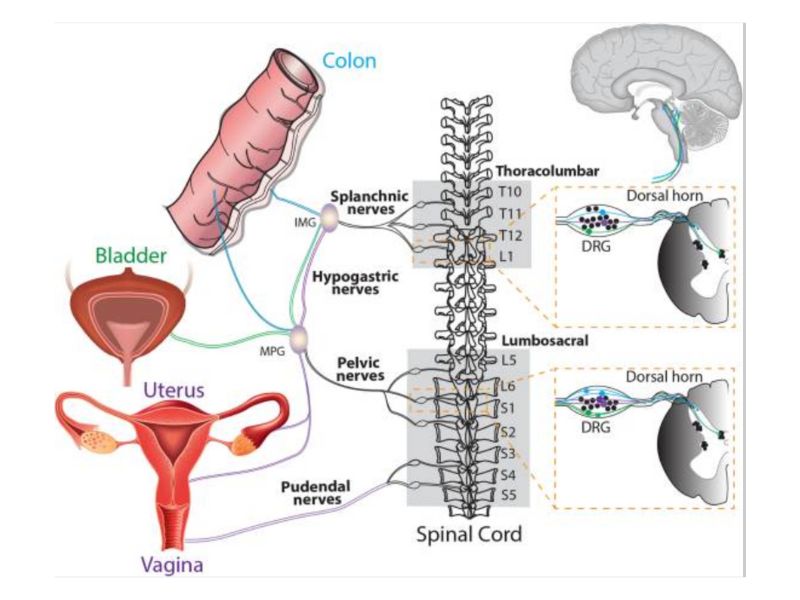
How is Endometriosis diagnosed and treated?
Endometriosis is currently diagnosed surgically, however there are lab tests being developed right now, which is exciting! (4)
Currently, physicians and patients often opt for what’s called a “clinical diagnosis of endometriosis” choosing to avoid or delay the surgery and opt for medication/hormonal management in the presence of symptoms suggesting endometriosis.
The Role of Pelvic Floor Physical Therapy
Endometriosis is a specialized condition requiring specialized care.
This is not “standard” physical therapy but a specialized field focusing on the muscles, nerves, and tissues of the pelvic region. Even with surgical excision of endometriosis lesions, patients may have persistent pain (4). Physical therapy can help manage the pain that arises after surgery and also help if you choose to hold off on the surgery!
Key areas of Endometriosis treatment include:
Releasing Pelvic Floor Tension
Method: Manual therapy techniques, including internal and external trigger point release.
Goal: To relax hypertonic (tight) pelvic floor muscles, which can reduce pain during periods, intercourse (dyspareunia), and with bladder/bowel movements.
Reducing Nerve Sensitivity
Method: Gentle massage, soft tissue mobilization, and TENS (Transcutaneous Electrical Nerve Stimulation) units.
Goal: To calm the overactive nerves in the pelvic region, helping to desensitize the central nervous system and reduce pain.
Improving Core and Postural Stability
Method: Targeted exercises to strengthen the core muscles, including the deep abdominals and glutes.
Goal: To support the pelvic region, improve posture, and alleviate strain on the lower back and hips.
Managing Bladder and Bowel Symptoms
Method: Education on proper voiding/toileting posture, breathing techniques, and pelvic floor muscle coordination.
Goal: To help with common endometriosis symptoms like urinary urgency, frequency, and constipation.
Patient Education and Self-Management
Method: Teaching patients about pain science, body mechanics, and a personalized home exercise program.
Goal: To empower patients with tools for long-term symptom management, such as diaphragmatic breathing, stretches, and using heat therapy.
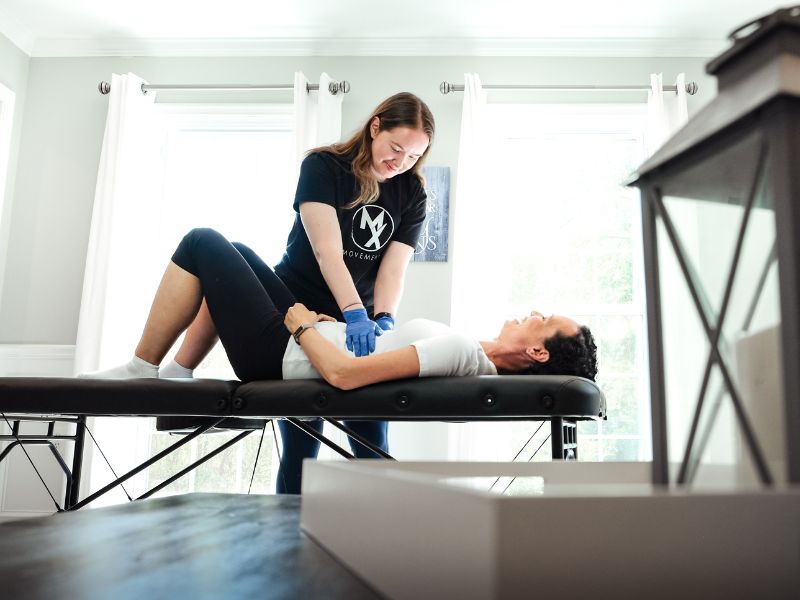
What to Expect from a Physical Therapy Appointment
Physical therapy for and around Endometriosis starts with a subjective interview.
This is a detailed discussion of your symptoms, medical history, and goals with your physical therapist. We want to get to the root of why you’re here, what you’ve been dealing with, and what you want to get back to doing!
Next, we do a physical exam. This may include an external examination of the hips, back, and abdomen, and a gentle internal examination of the pelvic floor muscles (with patient consent, of course).
However, if you’re not comfortable with a vaginal pelvic exam, we can always complete the assessment at a future visit or modify the exam to not assess internally at all! In this exam we’re looking at range of motion, strength, endurance, tissue qualities, and overall function.
Finally, your provider works with you to build your treatment plan.
This is a highly personalized plan based on your assessment, combining in-office treatment with a home exercise program.
Common treatments include stretches, breathing techniques, strengthening and coordination exercises, and manual techniques in the clinic and at home to improve your symptoms.
Taking Control of Your Pain
Physical therapy offers a holistic and empowering approach to managing endometriosis symptoms. It’s not a cure, but it is a powerful tool to break the pain cycle.
Speak with your gynecologist or primary care physician about getting a referral to a pelvic floor physical therapist and share this blog article with someone that needs it!
And, to learn more about pelvic floor physical therapy with MovementX, click here!
References
- World Health Organization. Endometriosis. World Health Organization. Updated March 31, 2023. Accessed August 1, 2025. https://www.who.int/news-room/fact-sheets/detail/endometriosis.
- Maddern J, Grundy L, Castro J, Brierley SM. Pain in Endometriosis. Front Cell Neurosci. 2020;14:590823. Published 2020 Oct 6. doi:10.3389/fncel.2020.590823
- Taylor HS, Kotlyar AM, Flores VA. Endometriosis is a chronic systemic disease: clinical challenges and novel innovations. Lancet. 2021;397(10276):839-852. doi:10.1016/S0140-6736(21)00389-5
- E M Schoeman, S Bringans, K Peters, T Casey, C Andronis, L Chen, M Duong, J E Girling, M Healey, B A Boughton, D Ismail, J Ito, C Laming, H Lim, M Mead, M Raju, P Tan, R Lipscombe, S Holdsworth-Carson, P A W Rogers, Identification of plasma protein biomarkers for endometriosis and the development of statistical models for disease diagnosis, Human Reproduction, Volume 40, Issue 2, February 2025, Pages 270–279, https://doi.org/10.1093/humrep/deae278
About the Author
Dr. Morgan Groover is a physical therapist based in Chantilly, VA. She treats pelvic health, orthopedic conditions, post-operative care, active adults and athletes, individuals with hypermobility, and people with POTS. As a former swimmer and current practitioner of an active lifestyle herself, Dr. Morgan Groover is ready to help you move better, live well, and get back to doing what you love.



